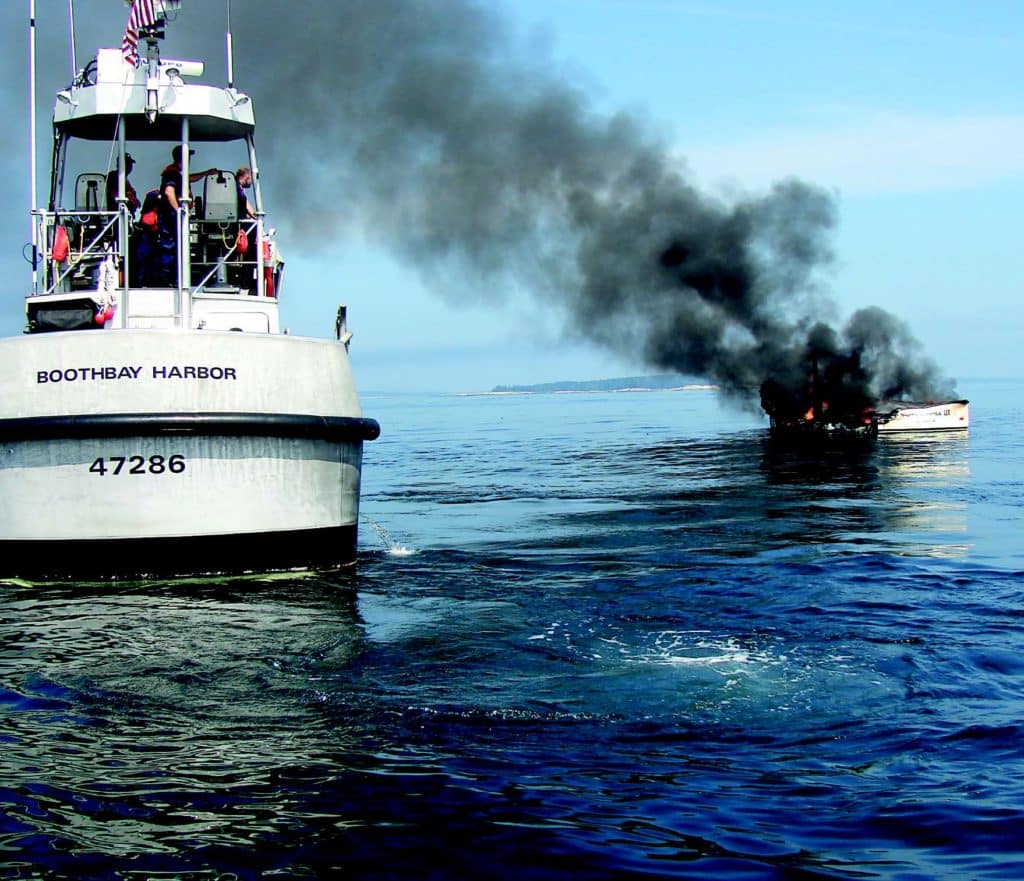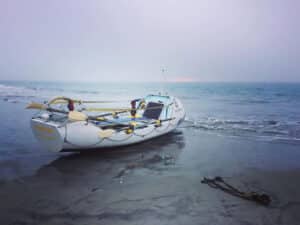
While inspecting the next Mom’s Mink at this winter’s boat shows, you’re going to notice new fuel components aboard boats powered by gasoline engines. I started to see these during Boating’s advance testing of several 2012 models last summer. The additions include carbon canisters, valves, fuel tanks with bladders inside and more. They compose a complete system designed to control fuel and vapors from escaping. You might hear these systems referred to as “evaporative emissions controls” or “diurnal fuel controls.”
As much as I believe in protecting the environment, I’m a bigger believer in protecting human life. Fueling up, the most common of boating tasks, can also be deadly. The vapor from just one cup of gasoline packs the explosive power of five pounds of dynamite. Gasoline can burn at 15,000 degrees F. I’ve seen a fiberglass boat explode; it burned to the waterline in minutes. Keep these facts in mind and review this fueling-up refresher.
All Ashore
Insist that your crew stretch their legs while you fuel up. Aboard the boat I saw explode, the skipper was thrown overboard by the blast, but was rescued and lived. Your crew may not be as lucky.
Batten Down
Close all hatches, doors and ports. Gas fumes are heavier than air and will sink into the lower parts of the boat, lying in wait for a spark, or just a rush of fresh air, to induce combustion.
Know Thy Boat
Look at the fuel gauge prior to filling. This coupled with knowledge of the tank’s capacity allows you to stop the flow when full or nearly so by monitoring the rate on the pump. Can’t see the pump? Ask a dock hand to stop the pump at a set number of gallons, or assign a crew member to call out to you. Clicking on the ignition to check the gauge during fueling is a no-no.
No Static
It’s imperative to make and maintain full and firm metal-to-metal contact between the pump nozzle and your boat’s fuel deck pipe. This grounds the nozzle and prevents a spark created by static electricity. FYI: Newer fiberglass docks create an inordinate amount of static. Forewarned is forearmed.
Sniff Test
Fueling complete, open the hatches and sniff for gas fumes in the bilge and engine compartment. If all smells well, run the blower for five minutes before starting the engines. This doesn’t apply to outboardpowered boats for obvious reasons.
Safety aboard is integral to good seamanship. Practice safety when you fuel up.
The U.S. Coast Guard is asking all boat owners and operators to help reduce fatalities, injuries, property damage, and associated healthcare costs related to recreational boating accidents by taking personal responsibility for their own safety and the safety of their passengers. Essential steps include: wearing a life jacket at all times and requiring passengers to do the same; never boating under the influence (BUI); successfully completing a boating safety course; and getting a Vessel Safety Check (VSC) annually from local U.S. Coast Guard Auxiliary, United States Power Squadrons(r), or your state boating agency’s Vessel Examiners. The U.S. Coast Guard reminds all boaters to “Boat Responsibly!” For more tips on boating safety, visit www.uscgboating.org.








